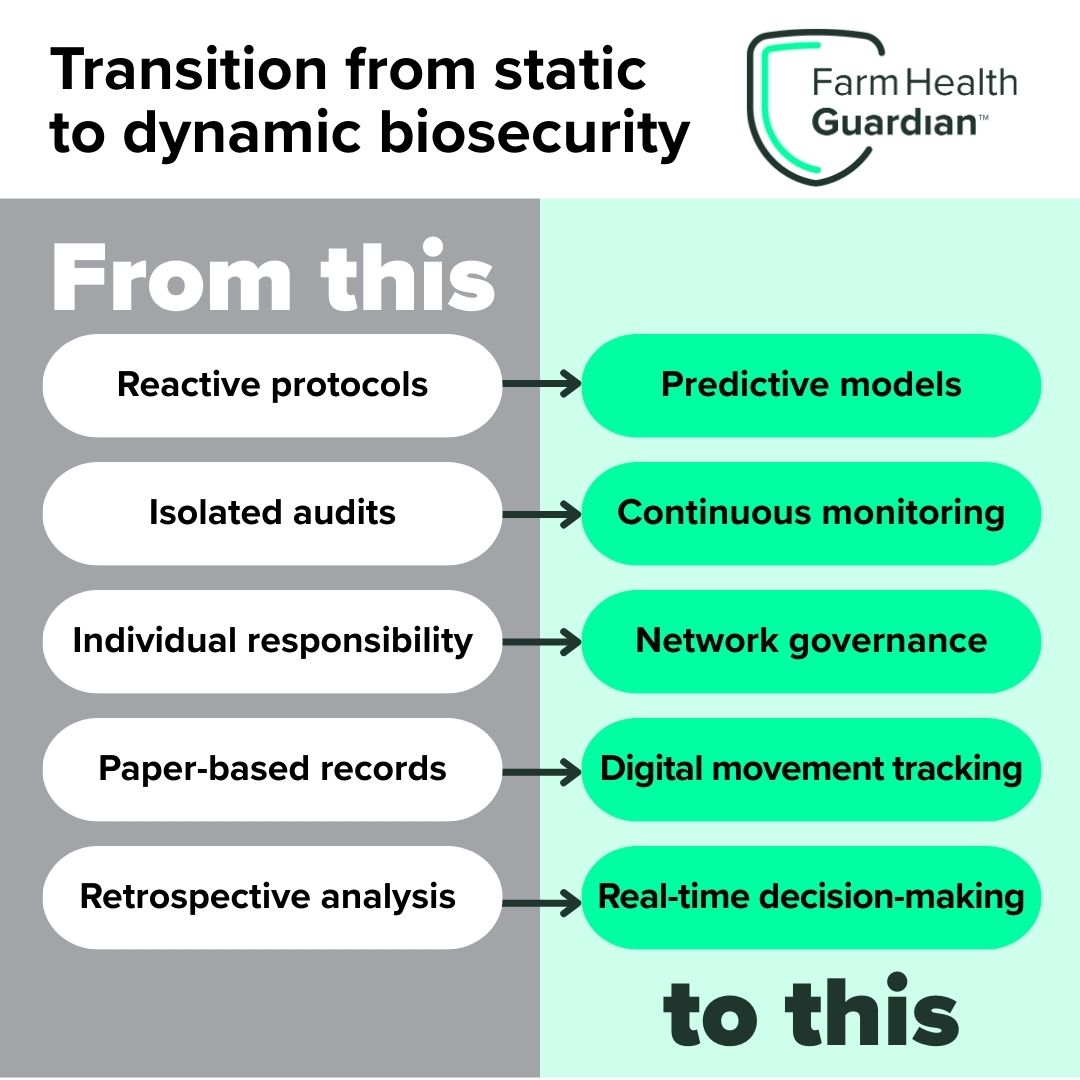Disease is the second largest cost in livestock production, after feed. While producers may not think of disease when they calculate cost of production, it shouldn’t be underestimated.
The underestimated cost of disease
Anthony Novero, Chief Technology Officer of Farm Health Guardian, says that we vastly underestimate how much disease costs. Significant losses due to mortality, depopulation and repopulation, and additional costs of cleaning and disinfection result in millions of dollars of lost revenue for large sow units. If a 5,000-sow unit is impacted by PRRS for example, it can mean a loss several million dollars in the profitability of a whole system.
Dr. John Patience from Iowa State University was involved in a study comparing the economics of pig production under different health conditions.1 The case study monitored pigs of different health status across three 1,000 head barns. Low, medium and high health challenges were maintained throughout the course of the experiment. All three barns tested positive for PRRS, and the medium and high health challenge barns also tested positive for influenza A virus.
Performance, mortality, growth and economics were compared and scaled up to a 2,400 head barn. Pigs weighed 29 lb at the start of the trial and were grown to market weight at 285 lb.
| Low | High | |
|---|---|---|
| Mortality | 3.3% | 19.9% |
| Pigs to market | >89% | 71% |
| Average daily gain | 1.9 lb/day | 1.6 lb/day |
| Days to market (DTM) | 133 | 148 |
| Gross revenue to 285 lb | $306,000 | $246,000 |
| Profit per pig | $13.50 | $-5.42 |
| Gross revenue (133 DTM) | $307,000 | $229,000 |
Over the course of the study, mortality was 3.3% in the low health challenged barn, versus 19.9% for the high health challenged pigs. Days to market was a full two weeks extra for the high health challenged pigs vs the low health challenged pigs.
Looking at revenue per pig, it was $13.50 for the low health challenged barn, versus a loss of $5.42 for the high health challenged barn. That’s a $19.25 per pig difference.
Using a fixed weight of 285 lb per pig, the total revenue of the low health challenged barn was $306,000. For the high health challenged barn, it was $246,000, a difference of $60,000. Looking at revenue per pig, it was $13.50 for the low health challenged barn, versus a loss of $5.42 for the high health challenged barn. That’s a $19.25 per pig difference.
The costs of disease are not just financial but emotional too. Novero emphasizes, “No one wants to work around sick pigs. When you have thousands of animals in a barn, there are going to be losses. When disease hits it becomes emotionally draining, not just physically demanding.”
Making biosecurity stick
But biosecurity culture isn’t built by statistics and studies alone; it’s built by people. It takes more than a prescriptive checklist for a farm system to have a strong biosecurity culture in practical day to day operations.
That’s where Farm Health Guardian (FHG) biosecurity breach alerts come in. Farm Health Guardian (FHG) transport biosecurity breach alerts are proven to change behaviour and improve compliance, reducing risk of disease spread and keeping animals healthy.
How does it work? FHG links to a fleet GPS system, or our GPS devices can be installed on trailers or vehicles that don’t have GPS. When rules are breached, a notification, or breach alert, is sent as it’s happening.
Biosecurity breach alerts are proven to improve compliance in the swine industry. The ability to visualize actual truck and trailer routes and receive breach alerts as they’re happening leads to greater awareness and improved biosecurity compliance. The data from Farm Health Guardian may prompt a re-evaluation of routing logistics, the implementation of more stringent rules, or simply the ability to intervene immediately when there is a breach.
Aggregate data from FHG customers shows a distinct downward trend in biosecurity breaches over time, showing the power of near real-time feedback.

Controlling pathogen movements throughout the entire value chain: Toward a dynamic, collective biosecurity strategy in European swine systems, discusses that to be effective, biosecurity must move beyond a prescriptive checklist toward a dynamic process of continuous threat recognition, adapted to specific contexts and evolving circumstances.2
It reads, “To embed ongoing compliance the system needs to routinely inform all actors about their individual and collective compliance,” This statement highlights the value of FHG breach alerts and their proven ability to improve biosecurity compliance.

“People are in this to take care of animals and make a bit of money. Working around sick pigs makes the job a lot worse for employees and employers, and people start losing morale,” says Novero. “That’s what’s behind Farm Health Guardian and everything that we do.”
For more information visit farmhealthguardian.com.

